#south African tribe
Text
ZULU WOMAN


#zulu#zulu tribe#zulu woman#Zulu dressing attire for women#shaka zulu#black femininity#black women in luxury#blackgirlmagic#black women#poc#woc#woman of color#south africa#south African tribe#culture#heritage day
46 notes
·
View notes
Text

#Kinu Nishimura#Official art#Mexican#Lily Hawk#Thunderfoot tribe descendant#capcom#street fighter series#SF6#Street Fighter 6#Cammy White#British#Juri Han#Ju-ri Han#South Korean#Kimberly Jackson#American#African-American#Chun-Li#Chinese#Marisa#Italian#Manon#French
214 notes
·
View notes
Text
Sun Goddess - Shaping African Fashion
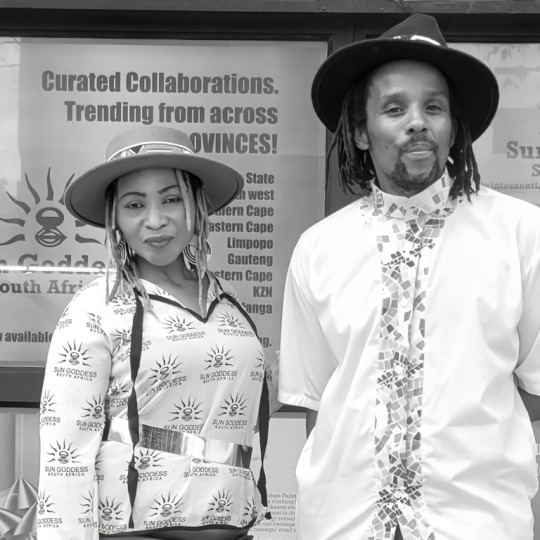

https://istyleblaq.com/sun-goddess-shaping-african-narrative/
#south african#african stories#african tribe#africanstyle#fashion#blogs south africa#blog#black fashion
3 notes
·
View notes
Text
The Ndwandwe–Zulu War: A Turning Point in South African History
The Ndwandwe-Zulu War of 1817–1819 stands as a significant and pivotal conflict in the history of South Africa, marking the intense struggle between the burgeoning Zulu Kingdom and the Ndwandwe ethnic group. At its core, this war was a clash of cultures, power, and survival, leaving a profound impact on the region for years to come.
The roots of this war can be traced back to the remarkable…

View On WordPress
#African History#Ndwandwe tribe#Ndwandwe-Zulu War#South Africa history#The Ndwandwe–Zulu War#war#War History#Zulu History#Zulu Kingdom
0 notes
Text
The Great Dinka Tribe of South Sudan: Culture, History, and People
The Resilient Dinka Tribe of South Sudan
The Dinka represent the largest ethnic group and tribe in South Sudan, concentrated along the banks of the White Nile River basin numbering around 4.5 million people. As cattle herders whose way of life revolves around their cows, the Dinka have preserved a resilient culture centered on their ancestral Nilotic language passed through generations. However,…

View On WordPress
#African language#cattle herding#Dinka people#Dinka tribe#displacement#indigenous religion#migration#Nilotic culture#South Sudan#traditional lifestyle
0 notes
Text
Israel vs the ICJ: Is This a Waste of Time?
By Gwynne Dyer*
The two sides have had their day in court – one day each, actually. The seventeen judges of the International Court of Justice (ICJ) have now retired to consider what interim decisions they should make on South Africa’s accusation that Israel’s actions in the Gaza Strip amount to the crime of genocide. Is this just a waste of time?
The response of Israel’s mass media and most…

View On WordPress
#African Tribes#Anti-semitism#Benjamin Netanyahu#Brazil#BRICS#China#Gaza Strip#Gwynne Dyer#ICJ#India#International Court of Justice#Israel#Israelis#Jews#Killing of Palestinians#Palestinians#President Jo BIden#Rohingyas#Russia#South Africa#Sudan Military Regime#The Shortest History of War#US
0 notes
Text
Fatherland Carolina - African Lifestyle and Culture in South Carolina
We are creating global economic opportunities for the African and African Descendants, yielding significant revenue for the governments via tax payments from the enterprises, tourists, residents, and employees and also promoting and protecting African Art, Culture, Faith, Tourism, and Tradition around the World.
#African Art#Culture#Faith#Tourism#Fatherland Carolina#African and African Descendants#african american black culture#african tribe in south carolina#invest in african startups#african lifestyle and culture carolina#dna testing for african ancestry
0 notes
Text
Things Biden and the Democrats did, this week #21
May 31-June 7 2024
As part of President Biden's goal to bring the number of traffic deaths to zero, the Department of Transportation has sent $480 million in safety grants to all 50 states, DC, and all the US territories. The grants will focus on trucks, buses and other large vehicles. Thanks to DoT safety actions deaths involving heavy vehicles dropped by 8% from 2022 to 2023 and the department wants to keep pushing till the number is 0.
The Departments of Interior and Agriculture announced $2.8 billion plan to protect public land and support local government Conservation Efforts. $1.9 billion will be used to repair and restore national parks and public land, restoring historic sites, as well as Bureau of Indian Education-funded schools. $900 million will go to conservation funding, allowing the government to buy land to protect it. Half the funds will go to the federal government half to state and local governments and for the first time ever a tribal Conservation Land Acquisition program has been set up to allow tribal governments to buy land to protect nature.
The Department of Transportation announced that it had managed to get customers nearly $1 Billion dollars worth of flight reimbursements. The DoT reached an agreement with 3 airlines, Lufthansa, KLM, and South African Airways to pay between them $900 million to passengers effected by Covid related cancellations and delays. This adds to the $4 billion dollars of refunds and reimbursements to airline passengers under the Biden Administration.
The Department of Interior announced $725 million to clean up legacy coal pollution. This is the 3rd pay out from the $11.3 billion dollars President Biden signed into law in the Bipartisan Infrastructure Law to clean up coal pollution and invest in communities that used to rely on the coal industry. The money will be spent across 22 states and the Navajo Nation. Closing dangerous mine shafts, reclaim unstable slopes, improve water quality by treating acid mine drainage, and restore water supplies damaged by mining.
HUD launches the first of its kind investment program in manufactured homes. Manufactured homes represent a major market for affordable housing and the Biden Administration is the first to offer support to people trying to buy. HUD hopes the program will help 5,000 families and individuals buy their own home over the next 5 years.
The Department of the Interior announced $700 million for long-term water conservation projects across the Lower Colorado River Basin. The Colorado River Basin provides water for more than 40 million people, electric power to 7 US States and is a critical crucial resource for 30 Tribal nations and two Mexican states. The project hopes to save more than 700,000 acre-feet of water in Lake Mead. In the face of climate change causing a historic 23-year drought, there is record low water levels at Lake Powell and Lake Mead. The Biden Administration has moved aggressively to try to protect the Colorado River and make sure there's enough water in the West.
HUD makes $123 million for fighting Youth Homelessness available. This represents the 8th round of investment in Youth Homelessness since 2021 for a total of $440 million so far. The Biden Administration is focusing on innovative answers, like host homes, and kinship care models, with emphasis on creating equitable strategies to assist youth who are most vulnerable, including BIPOC, LGBTQIA+, and youth with disabilities. This is part of the Biden Administration goal of cutting homelessness by 25% by the end of 2025
The Department of Agriculture announced a series of actions to strength Tribal food sovereignty. The USDA will grant tribes in Maine, Alaska, Montana, Nebraska, North Carolina, Oregon and Washington $42 million through the Indigenous Animals Harvesting and Meat Processing Grants to support native animal harvesting. $18 million for projects under the Tribal Forest Protection Act. As well as $2.3 million to support the service of Indigenous foods in school meal programs. The USDA also plans its first ever class of interns specifically focused on Tribal agriculture and food sovereignty. The USDA also plans to host a first ever international trade mission focused on Tribal Nation and Native Hawaiian Community businesses.
Bonus: President Biden, First Lady Jill Biden, and Secretaries of Defense Lloyd Austin and State Antony Blinken traveled to Normandy France to mark the 80th Anniversary of D-Day. They were joined by a handful of surviving veterans of the landings many over 100 years old.
youtube
#Thanks Biden#Joe Biden#us politics#american politics#D-Day#housing#air lines#climate change#conservation#water#colorado river
339 notes
·
View notes
Text
fuck your pride activism if it only includes cis, white able-bodied and neurotypical queers
fuck your pride activism if you forgot why we celebrate this month and who started it (black and trans working class ppl if you needed a reminder)
fuck your pride activism if you pretend to care about the community but then continue to buy from big companies that donate millions to anti lgbt politicians, perpetuate genocide, exploit other human beings and destroy the environment (but put a rainbow on their logo each june so it's ok)
fuck your pride activism if it continues to support israel and still falls for its pinkwashing and racist bullshit (about it being the only progressive country in the middle east etc)
fuck your pride activism if you exclude palestinian, congolese, sudanese, uyghur, armenian, (and every community suffering from genocide) lgbtq people from your cry for freedom
fuck your pride activism if it doesn't support the liberation of south and central american, caribbean, asian, romani, eastern european, sámi, middle eastern, native american, pacific islander, maori, aboriginal australian, indigenous tribes everywhere, and african people.
fuck your pride activism if you don't support religious queer people and reject their spirituality and connection to their faith as part of their identity
fuck your pride activism if you don't welcome queer inmigrants, war refugees and political refugees
fuck your pride activism if you don't uplift the voices of those who can't, those who are silenced, those who have to hide, those who fear imprisonment or death for being who they are
fuck state homophobia and opressive regimes
fuck homonationalism and the hypocrisy of the west
fuck capitalist and colonial pride
pride is for every single one of us
pride was a riot before it was a celebration and i intend to protest for an intersectional activism each and every day of this month
#i'm so done#no pride in genocide#happy pride 🌈#pride month#queer pride#lgbtq#lgbtq community#lgbt pride#lgbtqia#queer#queer community#pride#pride 2024#happy pride month#queer activism#lgbt activism#collective liberation#none of us are free until all of us are free#none of us is free until we all are#freedom#free palestine#free congo#free sudan#free artsakh#free syria#refugees#inmigrantes#free gaza#immigrants#human rights
278 notes
·
View notes
Text
It’s 4am and I’m having emotions about calling Mesopotamia “the cradle of civilization” so y’all are just going to have to bear with me.
Like okay, there are technically six so-called cradles of civilization: Mesopotamia, ancient Egypt, ancient China, ancient India, and two civilizations in south and Central America called the Olmec (Mexico) and Caral-Supe (Peru). But the one we all learn about in school is Mesopotamia, bleeding into Egypt.
But.
The oldest of those is the Fertile Crescent (Egypt, the Levant, Mesopotamia), clocking in around 12,000 BCE. That’s the 121st century BCE, if you’re wondering. “Behavioral modernity,” I.e. the thing that separates Homo sapiens from Homo erectus and Homo heidelbergensis, began 160,000 to 60,000 years ago. Homo sapiens was found in most of Africa before ever beginning the migration to other continents—by over 80,000 years, in some cases.
And we all know how Africa got treated in the post-Roman era.
How do we know there was no cradle of civilization in Africa? Like. It’s generally taken that “cradle of civilization” means cities, agriculture, and usually-but-not-always a writing system. We also know that if all humans on earth disappeared right now, in 15,000 years the only sign we were ever here would be a millimeters-thin line of plastic in the geologic record. And that’s in a world where we have stainless steel, concrete, the ability to carve in stone…
What I’m saying is, the oldest piece of string in the world is 50,000 years old and it was found in a cave. Huge swathes of Africa used to be green and lush. If some group ten thousand years ago decided to build a settlement out of mud bricks and tied-up pieces of wood in the African jungle, we’d never know today. The entire thing would have washed out and rotted away centuries ago. “Okay but agriculture—” one, not all agriculture is white people agriculture, and some of it is so different we wouldn’t recognize it at all (consider the terraforming east coast Native tribes did in North America that was so different from European farming methods it was taken as divine intervention in primeval forest). And two, I forget how many years it’s estimated to take before our fancy modern crops return to their wild roots once we’re gone, but I’m pretty sure it’s less than a hundred. We literally would have no way to tell anything was ever there.
And let’s say something did, by some miracle of preservation, survive to the “modern cradles of civilization.” Would it have survived subsequent wars and colonization? How about the changing climate as continents broke apart and ice ages came and went? Would we even have found it, given how gigantic it is and how little regard it’s received through the years?
Like. I could be totally wrong. But I also don’t see why it’s impossible for a civilization to have popped up in Africa like thirty thousand years ago for a century or two and then everyone went “ah, fuck this” and went back to being nomads. It happened at Cahokia. The city was abandoned and we don’t know why, but we do know there’s no evidence the mound-builders ever tried to rebuild somewhere else. And right here in my proverbial backyard, in Arizona, we had the Sinagua tribe, and in like the 1500s or so they just…dipped. There was a whole city built into the side of a cliff (two of them, actually, a few miles apart) and for unknown reasons they were abandoned. Archaeological evidence suggests the Sinagua moved northeast to join the Yavapai and Hopi tribes, but we have no idea why they left the Verde Valley. Water was still plentiful and even if Beaver Creek had started to dry up in summer—which is what it does today—only five miles away was a second city built around a sinkhole that’s still full of water today year-round (although it’s not potable by modern standards due to arsenic content in the water). Both were abandoned sometime in the 1400s for unknown reasons, and before you say “white people,” I will remind you white people didn’t come to America until 1492 and the site wasn’t discovered until over 100 years after it was abandoned.
So yeah. Maybe ancient civilizations in Africa so long ago, or so thoroughly erased by racist Europeans, that we’ll never know.
Thank you for coming to my TED talk.
1K notes
·
View notes
Note
Arabs are not native to North Africa, that's like saying white people are native to South America or South America. They're all there because of colonialism.
Except there’s tons of studies proving that the “Arabs” of North Africa are not descendants of Arabs but Arabized natives.
Very few Arab tribes settled in North Africa and the process of arabization was way more cultural than demographic. For example in a 2017 study that used Tunisia to represent North Africa they concluded that we were 88% North Africans/Imazighen, 2% from Western and Central Africa, 4% Arabs and 5% Europeans.
So Arabs as a whole are not native to North Africa but the people living there and calling themselves “Arabs” are native not colonizers.
You can totally condemn the arabization but claiming that Arabized natives are colonizers is stupid.
Lastly as I always say as an Algerian our grandparents fought for a FREE ALGERIA. For an ALGERIAN ALGERIA. They didn’t fight for an Arab Algeria or an Amazigh Algeria. So I don’t give a flying fuck if people are Arabized or not. We’re Algerians that’s it.
#ask#North Africa#arabization#same old discourse#it often comes from people who never opened a book and don’t know the difference between Arabs and people who have been Arabized.
425 notes
·
View notes
Text
Anti-Zionism & Purim:
Purim is a wonderfully joyous, often colourful and very tasty, Jewish holiday celebrated every year on the 14th of the Hebrew month of Adar (which corresponds to late winter/early spring). A holiday where drinking is a mitzvah, some dress up as characters from the Book of Esther, we gift good food and most definitely argue about which hamantaschen filling is best. Purim is about Jewish joy, resistance and outliving those who wish for our destruction.
Purim starts the evening of Saturday 23rd March, and ends at sundown the following day, Sunday 24th.
What’s the Purim story?
It is a story of salvation, of Jewish survival and being against all odds. The story of Purim comes from the salvation of the Jewish from Haman’s plot “to destroy, kill and annihilate all the Jews, young and old, infants and women, in a single day”. Haman, or Haman the Agagite, was a royal vizier in the court of the Persian empire, to King Ahasuerus/Xerxes I (465 BCE) who was agrivated by Moredcai, of the tribe Benjamin, and his refusal to bow down to his demands— thus Haman seeked revenge on his rejection and convinces the King to issue a decree to kill all Jews in the Persian empire. However the genocidal plot would soon be thearted by Hadassah, or as we know her, Queen Esther.
Queen Esther was an incredible Jewish woman whom the King Ahasuerus (transliteration of Xerxes) had fallen in love with. The Queen revealed her Jewish identity and pleaded with the King to spare her people, to which then, the King was appalled by Haman’s treachery— ordering his execution and granting Jews permission to defeat their enemies.
This story is apart of the Five Melligot (Melligah meaning “scroll” in Hebrew), the Book of Esther.
How is Purim celebrated?
Celebrating Purim depends on minhagim (customs) amongst Jewish cultural and ethnic communities: Ashkenazim may celebrate differently from Sefardim, who celebrate different from Middle Eastern, North African, South Asian and Ethiopian Jewry!
However, these are some universal rituals:
• Listen to the Purim story, the Book of Esther, typically at a Synagogue.
• Eating good for Seudah, a meal had during the day of Purim. Including foods such as pomegranate and wine brisket, hamantaschen, boyosa, challah with various toppings, rugelach, onion and poppy seed rings, hojuelas, kreplach, pickled vegetables and so much more.
• Mishloach Manot, gifting food to friends and/or family.
• Tzedakah, charity, and Metanot L’evyonim, supporting those in need.
• Haka’at Haman: during Megillah reading, there is a custom to make noise at the reading of Haman’s name. From stomping your feet to booing, this minhag is associated with Jewry of France and Provence, though has roots in Talmudic sources. You can read more here.
• Drinking lots of wine!
If you have any specific cultural Purim traditions, leave a comment! Traditions vary from family, to minhag, to cultures!
So, what do we learn from the story of Queen Esther?
Where our Rabbis may dress as Queen Esther, and we get drunk because it’s might be your favourite mitzvah, where we stick to tradition and try a new hamantaschen filling, and hearing the megillah like it’s the first time, all over again. Purim is where we introspect through our celebration; the very expression of joy, against all odds, is where we seek our growth. We exercise our liberty, our bravery and boldness— like Esther, we do not hide our Jewishness, instead we decorate ourselves. We do not stand in the face of adversity and let it through, we crush it and celebrate our resilience. Purim is a reminder of pride, of resistance and using your voice for those who may have theirs silenced. Like Queen Esther, we must not allow genocide and violence, and certainly not in our name as a people who have faught against it through out history. In honour of Purim, we must use what power we have to call for Tikkun Olam— a better future, for all.
Purim is where live to see ourselves dance and sing, the complete expression of G!d— HaShem, the Divine, the Universe, our collective human spirit— we live to build a future of many more Purims, many more celebrations of collective resistance. We dance and sing, and dress up, and drink, as is written, so that there is no world without this freedom.
Families often get creative in teaching their children, and communities, the importance of Purim, by making decorative masks to communicate the importance of identity, or dressing up in fun costumes inspired by strong characters, wether from the Purim story or just fictional worlds. Art is an incredible and important way to communicate, so if you want to get creative and make your own mask, costume or simply create artwork inspired by the story of Purim— tapping into your creative liberty is a wonderful ritual to add to your own traditions.
You can also show your gratitude to people, such as friends, family, service workers, activists, with gifts and letters to celebrate them and their bravery, their selflessness. Do you have anybody you’re greatful for, who’s inspired you to be more selfless, to give back?
What can I reflect on for Purim?
Think about how you show your Jewish pride, how you express your Jewish joy. Do you want to be more loud, more unapologetic, more open? How can you show up for others in need, who are in need for their voices to be uplifted? How can you do your part in building a future that celebrates total liberation from what tries to destroy us? Purim is about celebration, about joy, so as you join in on the festivities however you celebrate, remember that this full expression of your Jewish self is an act of resistance against a history of Jew hatred, a history of antisemitism, and that our existence will outlive the powers that pretend to be on our side.
How can I incorporate Palestine into my Purim celebrations?
Following traditions of donating and tzedekah, you can donate funds to GoFundMes of Palestinian families seeking refuge outside of Gaza, to ensure these families can make it to safety and eat well. We’ll be reposting and sharing GoFundMes and other calls for aid all day on Purim, if you’re looking to do some tzedekah.
As millions of Palestinians in Gaza are imminently facing starvation, you could aim to organise protests and rallies with your communities to demand action to be taken for immediate food distribution into Gaza. Be vocal on Purim, we’ll try to update you with any anti-Zionist events that may be happening across the world.
If you live near a Mosque/Masjid or Islamic community centre, you coulf drop off some Halal-safe food packages for Ramadan celebrations; sweets, pre-packaged/cooked foods and pastries. Your local Islamic food stores can definitely offer more guidance, and be sure to look out for the Halal logo! But, importantly, it’s always good to contact the Mosque or Community centre beforehand to see what donations they’re accepting!
If you’re visiting Shul, now more than ever is your time to challenge the narrative. Why must we turn away blind eye to a genocide whilst we celebrate our survival? Why must we allow the pain we have felt, pass to another, in the name of our survival? If you feel it is safe to do so, it is so irrevocably important to challenge the Zionist narratives that use our history, our holidays, our peoplehood to inflict harm that we once felt. As Queen Esther did, we must speak, and we must not be afraid to do so.
Further Purim readings:
The History of Purim
Laws and Customs of Purim
History of Purim costumes
We’re wishing everyone a happy, safe, healthy and beautiful Purim— please share with us how you’ll be celebrating this year, and keep an eye out for tzedekah posts to donate to Palestinians in need!
#purim#anti zionist jews#anti zionist purim#purim 2024#purim ideas#purim celebrations#what is purim#free palestine#purim for anti zionist jews#jewish holidays#info: purim
292 notes
·
View notes
Text
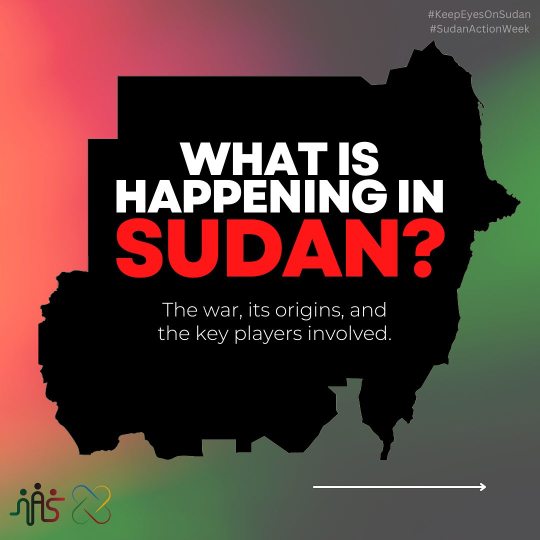
Via NasAlSudan
December 17 2023. #KeepEyesOnSudan #SudanActionWeek
Swipe through to build a foundational understanding of the war, its origins, and the key players involved. For actionable ways to support those in Sudan, check the link in our bio. Stay tuned for more posts this week.

Transcript:
National:
On April 15, a war broke out in Sudan's capital city of Khartoum between the Sudanese Armed Forces (SAF), and a paramilitary group known as the Rapid Support Forces (RSF).
Since then, eight months of conflict has led to major destruction of Khartoum's infrastructure, the most developed region of Sudan, with fighting also spreading to the regions of Darfur in the west and Kordofan in the south.
Civilians in conflict zones have been forcibly displaced, under threat of physical and sexual violence, particularly by the RSF, which has looted, destroyed, and settled in people's homes.
Regional:
In the western region of Darfur, a campaign of ethnic cleansing is being carried out by the RSF targeting the Masalit tribe. Allegations of genocide have been levied against the RSF.
Reports have just emerged that fighting has now spread to Wad Madani in Al Gezira state, which houses nearly 500,000 IDPs from Khartoum.
Key figures:
Abdel Fattah al Burhan Head of SAF
Omar El-Bashir Deposed Dictator of Sudan
Mohamed Dagalo (Hemidti) Head of RSF

Transcript:
Sudan: the war in numbers
A humanitarian "catastrophe"
24.7 million in need of critical humanitarian assistance
70-80% of hospitals out of service in conflict areas
19 million children are out of school
20.3 million people acutely food insecure. 4.9 million facing emergency hunger levels
6.7 million displaced [5.4 million IDPS, 1.3 million refugees]
7,000+ cholera cases an increase of +136% over the past month
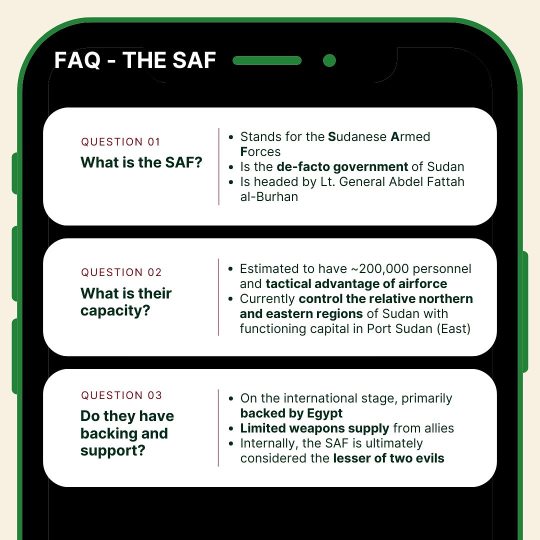
Transcript:
FAQ - THE SAF
QUESTION 01: What is the SAF?
Stands for the Sudanese Armed Forces
Is the de-facto government of Sudan
Is headed by Lt. General Abdel Fattah al-Burhan
QUESTION 02 What is their capacity?
Estimated to have ~200,000 personnel and tactical advantage of airforce
Currently control the relative northern and eastern regions of Sudan with functioning capital in Port Sudan (East)
QUESTION 03 Do they have backing and support?
On the international stage, primarily backed by Egypt
Limited weapons supply from allies
Internally, the SAF is ultimately considered the lesser of two evils
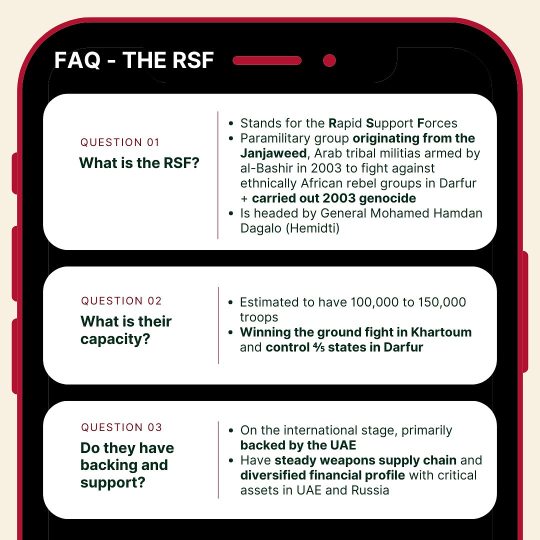
Transcript:
FAQ - THE RSF
QUESTION 01 What is the RSF?
Stands for the Rapid Support Forces
Paramilitary group originating from the Janjaweed, Arab tribal militias armed by al-Bashir in 2003 to fight against ethnically African rebel groups in Darfur + carried out 2003 genocide
Is headed by General Mohamed Hamdan Dagalo (Hemidti)
QUESTION 02 What is their capacity?
Estimated to have 100,000 to 150,000 troops
Winning the ground fight in Khartoum and control 4/5 states in Darfur
QUESTION 03 Do they have backing and support?
On the international stage, primarily backed by the UAE
Have steady weapons supply chain and diversified financial profile with critical assets in UAE and Russia
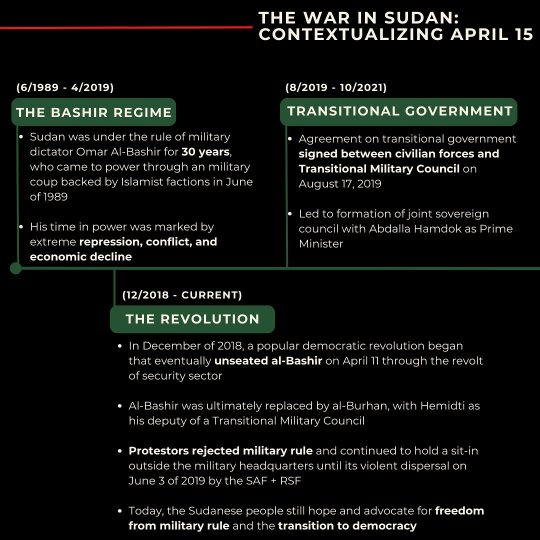
Transcript:
THE WAR IN SUDAN: CONTEXTUALIZING APRIL 15
(6/1989 - 4/2019) THE BASHIR REGIME
Sudan was under the rule of military dictator Omar Al-Bashir for 30 years, who came to power through an military coup backed by Islamist factions in June of 1989
His time in power was marked by extreme repression, conflict, and economic decline
(12/2018 CURRENT) THE REVOLUTION
In December of 2018, a popular democratic revolution began that eventually unseated al-Bashir on April 11 through the revolt of security sector
Al-Bashir was ultimately replaced by al-Burhan, with Hemidti as his deputy of a Transitional Military Council
Protestors rejected military rule and continued to hold a sit-in outside the military headquarters until its violent dispersal on June 3 of 2019 by the SAF + RSF
Today, the Sudanese people still hope and advocate for freedom from military rule and the transition to democracy
(8/2019-10/2021) TRANSITIONAL GOVERNMENT
Agreement on transitional government signed between civilian forces and Transitional Military Council on August 17, 2019
Led to formation of joint sovereign council with Abdalla Hamdok as Prime Minister

Transcript:
(10/2021 CURRENT)THE OCT 25, 2021 COUP
Burhan and Hemidti carry out military coup overthrowing civilian counterparts
They draw power from international legitimization despite prolonged mass protests in Sudan
(12/2022) THE FRAMEWORK AGREEMENT
In December of 2022, civilians put out a framework agreement signed onto by SAF and RSF + civil society groups and political parties meant to return to a transitional government
Key part of agreement: question of integration of the RSF into the SAF
Parties were to finalize the agreement and sign on April 1; RSF and SAF ultimately disagreed on integration timeline with RSF wanting 10 years and the SAF wanting 2
(12/2022-4/2023) THE LEAD UP TO APRIL 15
As framework agreement negotiations failed, both parties began mobilizing troops in capital of Khartoum in days leading up to April 15
Residents of Khartoum awoke to the sounds of gunfire on April 15 and by noon, the RSF had seized Meroe airport in the Northern state
Conflict today considered a battle for power between the two generals they are too far in to walk back

Transcript:
FRAMING ALLIANCES
Sudanese Armed Forces (SAF):
Egypt
Israel (Foreign Ministry)
Islamists
Iran
Saudi Arabia
Ukraine (SOF)
Armed Groups
Rebel groups that had taken up arms against the central government in the Bashir Era are forced to ally with the SAF due to the RSF's ethnic cleansing campaign. They include:
Justice and Equality Movement (Gibril Ibrahim)
Sudan Liberation Movement/Army (Minni Minawi)
Gathering of Sudan Liberation Forces (Abdallah Yahya)
Rapid Support Forces (RSF):
Israel (Mossad)
Libya (Khalifa Haftar)
United Arab Emirates
Central African Republic
Russia (Wagner Group)
Chad
Arab Tribal Leaders
Arab tribal leaders across the Western region of Darfur have pledged their allegiance and support to the RSF, with members of the tribes across the Sahel crossing into Sudan to join the RSF's assault as well.
Key tribes include: Beni Halba, Tarjam, Habaniya, Fallata, Misseriya, Taaysha, Rizeigat
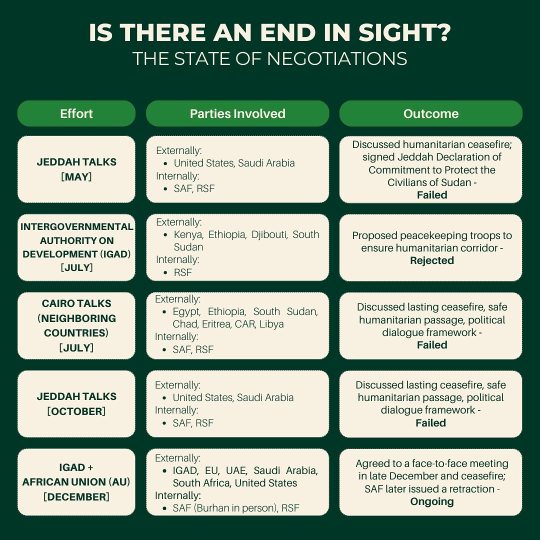
Transcript:
IS THERE AN END IN SIGHT?
THE STATE OF NEGOTIATIONS
Effort: JEDDAH TALKS [MAY]
Parties involved: Externally: United States, Saudi Arabia Internally: SAF, RSF
Outcome: Discussed humanitarian ceasefire; signed Jeddah Declaration of Commitment to Protect the Civilians of Sudan - Failed
Effort: INTERGOVERNMENTAL AUTHORITY ON DEVELOPMENT (IGAD) [JULY]
Parties Involved: Externally: Kenya, Ethiopia, Djibouti, South Sudan Internally: RSF
Outcome: Proposed peacekeeping troops to ensure humanitarian corridor - Rejected
Effort: CAIRO TALKS (NEIGHBORING COUNTRIES) [JULY]
Parties Involved: Externally: Egypt, Ethiopia, South Sudan, Chad, Eritrea, CAR, Libya Internally: SAF, RSF
Outcome: Discussed lasting ceasefire, safe humanitarian passage, political dialogue framework - Failed
Effort: JEDDAH TALKS [OCTOBER]
Parties Involved: Externally: United States, Saudi Arabia Internally: SAF, RSF
Outcome: Discussed lasting ceasefire, safe humanitarian passage, political dialogue framework - Failed
Effort: IGAD + AFRICAN UNION (AU) [DECEMBER]
Parties Involved: Externally: IGAD, EU, UAE, Saudi Arabia, South Africa, United States Internally: SAF (Burhan in person), RSF
Outcome: Agreed to a face-to-face meeting in late December and ceasefire; SAF later issued a retraction - Ongoing
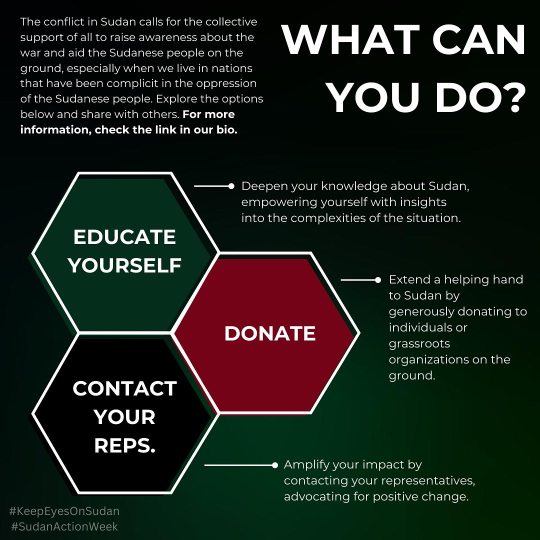
Transcript:
The conflict in Sudan calls for the collective support of all to raise awareness about the war and aid the Sudanese people on the ground, especially when we live in nations that have been complicit in the oppression of the Sudanese people. Explore the options below and share with others. For more information, check the link in our bio.
WHAT CAN YOU DO?
EDUCATE YOURSELF
Deepen your knowledge about Sudan, empowering yourself with insights into the complexities of the situation.
DONATE
Extend a helping hand to Sudan by generously donating to individuals or grassroots organizations on the ground.
CONTACT YOUR REPS.
Amplify your impact by contacting your representatives, advocating for positive change.
#sudan#keep eyes on sudan#KeepEyesOnSudan#Sudan Action Week#SudanActionWeek#i hope the way i formatted it is good#i saw a few hours ago that rsf retreated from wad madani outskirts
368 notes
·
View notes
Text
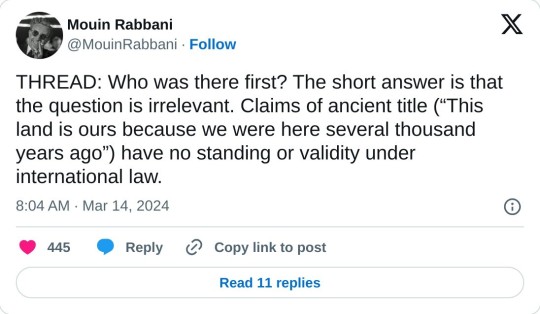
twitter thread by Mouin Rabbani
March 14, 2024
Who was there first? The short answer is that the question is irrelevant. Claims of ancient title (“This land is ours because we were here several thousand years ago”) have no standing or validity under international law.
For good reason, because such claims also defy elementary common sense. Neither I nor anyone reading this post can convincingly substantiate the geographical location of their direct ancestors ten or five or even two thousand years ago.
If we could, the successful completion of the exercise would confer exactly zero property, territorial, or sovereign rights.
As a thought experiment, let’s go back only a few centuries rather than multiple millennia. Do South Africa’s Afrikaners have the right to claim The Netherlands as their homeland, or even qualify for Dutch citizenship, on the basis of their lineage?
Do the descendants of African-Americans who were forcibly removed from West Africa have the right to board a flight in Atlanta, Port-au-Prince, or São Paolo and reclaim their ancestral villages from the current inhabitants, who in all probability arrived only after – perhaps long after – the previous inhabitants were abducted and sold into slavery half a world away?
Do Australians who can trace their roots to convicts who were involuntarily transported Down Under by the British government have a right to return to Britain or Ireland and repossess homes from the present inhabitants even if, with the help of court records, they can identify the exact address inhabited by their forebears? Of course not.
In sharp contrast to, for example, Native Americans or the Maori of New Zealand, none of the above can demonstrate a living connection with the lands to which they would lay claim.
To put it crudely, neither nostalgic attachment nor ancestry, in and of themselves, confer rights of any sort, particularly where such rights have not been asserted over the course of hundreds or thousands of years.
If they did, American English would be the predominant language in large parts of Europe, and Spain would once again be speaking Arabic.
Nevertheless, the claim of ancient title has been and remains central to Zionist assertions of not only Jewish rights in Palestine, but of an exclusive Jewish right to Palestine.
For the sake of argument, let’s examine it. If we put aside religious mythology, the origin of the ancient Israelites is indeed local.
In ancient times it was not unusual for those in conflict with authority or marginalized by it to take to the more secure environment of surrounding hills or mountains, conquer existing settlements or establish new ones, and in the ultimate sign of independence adopt distinct religious practices and generate their own rulers. That the Israelites originated as indigenous Canaanite tribes rather than as fully-fledged monotheistic immigrants or conquerors is more or less the scholarly consensus, buttressed by archeological and other evidence. And buttressed by the absence of evidence for the origin stories more familiar to us.
It is also the scholarly consensus that the Israelites established two kingdoms, Judah and Israel, the former landlocked and covering Jerusalem and regions to the south, the latter (also known as the Northern Kingdom or Samaria) encompassing points north, the Galilee, and parts of contemporary Jordan. Whether these entities were preceded by a United Kingdom that subsequently fractured remains the subject of fierce debate.
What is certain is that the ancient Israelites were never a significant regional power, let alone the superpower of the modern imagination.
There is a reason the great empires of the Middle East emerged in Egypt, Mesopotamia, Persia, and Anatolia – or from outside the region altogether – but never in Palestine.
It simply lacked the population and resource base for power projection. Jerusalem may be the holiest of cities on earth, but for almost the entirety of its existence, including the period in question, it existed as a village, provincial town or small city rather than metropolis.
Judah and Israel, like the neighboring Canaanite and Philistine entities during this period, were for most of their existence vassal states, their fealty and tribute fought over by rival empires – Egyptians, Assyrians, Babylonians, etc. – rather than extracted from others.
Indeed, Israel was destroyed during the eighth century BCE by the Assyrians, who for good measured subordinated Judah to their authority, until it was in the sixth century BCE eliminated by the Babylonians, who had earlier overtaken the Assyrians in a regional power struggle.
The Babylonian Exile was not a wholesale deportation, but rather affected primarily Judah’s elites and their kin. Nor was there a collective return to the homeland when the opportunity arose several decades later after Cyrus the Great defeated Babylon and re-established a smaller Judah as a province of the Persian Achaemenid empire. Indeed, Mesopotamia would remain a key center of Jewish religion and culture for centuries afterwards.
Zionist claims of ancient title conveniently erase the reality that the ancient Israelites were hardly the only inhabitants of ancient Palestine, but rather shared it with Canaanites, Philistines, and others.
The second part of the claim, that the Jewish population was forcibly expelled by the Romans and has for 2,000 years been consumed with the desire to return, is equally problematic.
By the time the Romans conquered Jerusalem during the first century BCE, established Jewish communities were already to be found throughout the Mediterranean world and Middle East – to the extent that a number of scholars have concluded that a majority of Jews already lived in the diaspora by the time the first Roman soldier set foot in Jerusalem.
These communities held a deep attachment to Jerusalem, its Temple, and the lands recounted in the Bible. They identified as diasporic communities, and in many cases may additionally have been able to trace their origins to this or that town or village in the extinguished kingdoms of Israel and Judah. But there is no indication those born and bred in the diaspora across multiple generations considered themselves to be living in temporary exile or considered the territory of the former Israelite kingdoms rather than their lands of birth and residence their natural homeland, any more than Irish-Americans today feel they properly belong in Ireland rather than the United States.
Unlike those taken in captivity to Babylon centuries earlier, there was no impediment to their relocation to or from their ancestral lands, although economic factors appear to have played an important role in the growth of the diaspora.
By contrast, those traveling in the opposite direction appear to have done so, more often than not, for religious reasons, or to be buried in Jerusalem’s sacred soil.
Nations and nationalism did not exist 2,000 years ago.
Nor Zionist propagandists in New York, Paris, and London incessantly proclaiming that for two millennia Jews everywhere have wanted nothing more than to return their homeland, and invariably driving home rather than taking the next flight to Tel Aviv.
Nor insufferably loud Americans declaring, without a hint of irony or self-awareness, the right of the Jewish people to Palestine “because they were there first”.
Back to the Romans, about a century after their arrival a series of Jewish rebellions over the course of several decades, coupled with internecine warfare between various Jewish factions, produced devastating results.
A large proportion of the Jewish population was killed in battle, massacred, sold into slavery, or exiled. Many towns and villages were ransacked, the Temple in Jerusalem destroyed, and Jews barred from entering the city for all but one day a year.
Although a significant Jewish presence remained, primarily in the Galilee, the killings, associated deaths from disease and destitution, and expulsions during the Roman-Jewish wars exacted a calamitous toll.
With the destruction of the Temple Jerusalem became an increasingly spiritual rather than physical center of Jewish life. Jews neither formed a demographic majority in Palestine, nor were the majority of Jews to be found there.
Many of those who remained would in subsequent centuries convert to Christianity or Islam, succumb to massacres during the Crusades, or join the diaspora. On the eve of Zionist colonization locally-born Jews constituted less than five per cent of the total population.
As for the burning desire to return to Zion, there is precious little evidence to substantiate it. There is, for example, no evidence that upon their expulsion from Spain during the late fifteenth century, the Sephardic Jewish community, many of whom were given refuge by the Ottoman Empire that ruled Palestine, made concerted efforts to head for Jerusalem. Rather, most opted for Istanbul and Greece.
Similarly, during the massive migration of Jews fleeing persecution and poverty in Eastern Europe during the nineteenth century, the destinations of choice were the United States and United Kingdom.
Even after the Zionist movement began a concerted campaign to encourage Jewish emigration to Palestine, less than five per cent took up the offer. And while the British are to this day condemned for limiting Jewish immigration to Palestine during the late 1930s, the more pertinent reality is that the vast majority of those fleeing the Nazi menace once again preferred to relocate to the US and UK, but were deprived of these havens because Washington and London firmly slammed their doors shut.
Tellingly, the Jewish Agency for Israel in 2023 reported that of the world’s 15.7 million Jews, 7.2 million – less than half – reside in Israel and the occupied Palestinian territories.
According to the Agency, “The Jewish population numbers refer to persons who define themselves as Jews by religion or otherwise and who do not practice another religion”.
It further notes that if instead of religion one were to apply Israel’s Law of Return, under which any individual with one or more Jewish grandparent is entitled to Israeli citizenship, only 7.2 of 25.5 million eligible individuals (28 per cent) have opted for Zion.
In other words, “Next Year in Jerusalem” was, and largely remains, an aspirational religious incantation rather than political program. For religious Jews, furthermore, it was to result from divine rather than human intervention.
For this reason, many equated Zionism with blasphemy, and until quite recently most Orthodox Jews were either non-Zionist or rejected the ideology altogether.
Returning to the irrelevant issue of ancestry, if there is one population group that can lay a viable claim of direct descent from the ancient Israelites it would be the Samaritans, who have inhabited the area around Mount Gerizim, near the West Bank city of Nablus, without interruption since ancient times.
Palestinian Jews would be next in line, although unlike the Samaritans they interacted more regularly with both other Jewish communities and their gentile neighbors.
Claims of Israelite descent made on behalf of Jewish diaspora communities are much more difficult to sustain. Conversions to and from Judaism, intermarriage with gentiles, absorption in multiple foreign societies, and related phenomena over the course of several thousand years make it a virtual certainty that the vast majority of Jews who arrived in Palestine during the late 19th and first half of the 20th century to reclaim their ancient homeland were in fact the first of their lineage to ever set foot in it.
By way of an admittedly imperfect analogy, most Levantines, Egyptians, Sudanese, and North Africans identify as Arabs, yet the percentage of those who can trace their roots to the tribes of the Arabian Peninsula that conquered their lands during the seventh and eighth centuries is at best rather small.
Ironically, a contemporary Palestinian, particularly in the West Bank and Galilee, is likely to have more Israelite ancestry than a contemporary diaspora Jew.
The Palestinians take their name from the Philistines, one of the so-called Sea Peoples who arrived on the southern coast of Canaan from the Aegean islands, probably Crete, during the late second millennium BCE.
They formed a number of city states, including Gaza, Ashdod, and Ashkelon. Like Judah and Israel they existed primarily as vassals of regional powers, and like them were eventually destroyed by more powerful states as well.
With no record of their extermination or expulsion, the Philistines are presumed to have been absorbed by the Canaanites and thereafter disappear from the historical record.
Sitting at the crossroads between Asia, Africa, and Europe, Palestine was over the centuries repeatedly conquered by empires near and far, absorbing a constant flow of human and cultural influences throughout.
Given its religious significance, pilgrims from around the globe also contributed to making the Palestinian people what they are today.
A common myth is that the Palestinian origin story dates from the Arab-Muslim conquests of the seventh century. In point of fact, the Arabs neither exterminated nor expelled the existing population, and the new rulers never formed a majority of the population.
Rather, and over the course of several centuries, the local population was gradually Arabized, and to a large extent Islamized as well.
So the question as to who was there first can be answered in several ways: “both” and “irrelevant” are equally correct.
Indisputably, the Zionist movement had no right to establish a sovereign state in Palestine on the basis of claims of ancient title, which was and remains its primary justification for doing so.
That it established an exclusivist state that not only rejected any rights for the existing Palestinian population but was from the very outset determined to displace and replace this population was and remains a historical travesty.
That it as a matter of legislation confers automatic citizenship on millions who have no existing connection with the land but denies it to those who were born there and expelled from it, solely on the basis of their identity, would appear to be the very definition of apartheid.
The above notwithstanding, and while the Zionist claim of exclusive Israeli sovereignty in Palestine remains illegitimate, there are today several million Israelis who cannot be simply wished away.
A path to co-existence will need to be found, even as the genocidal nature of the Israeli state, and increasingly of Israeli society as well, makes the endeavor increasingly complicated.
The question, thrown into sharp relief by Israel’s genocidal onslaught on the Palestinian population of the Gaza Strip, is whether co-existence with Israeli society can be achieved without first dismantling the Israeli state and its ruling institutions.
257 notes
·
View notes
Text
Fort Manda: A Historical Fortress in Madagascar
Fort Manda, a historical treasure nestled in Madagascar, stands as a testament to the nation’s rich and intricate history. Built at the dawn of the 19th century under the reign of King Radama I, this imposing fortress symbolizes the Merina tribe’s resilience and strategic acumen. The construction of Fort Manda spanned a remarkable eight years, a testament to the meticulous planning and unwavering…

View On WordPress
#African architecture#African Fortress#African History#Fort Manda#King Radama I#Merina tribe#South Africa history#South African architecture
0 notes
Text
Let's talk about Sudan-
TRANSCRIPT UNDER CUT

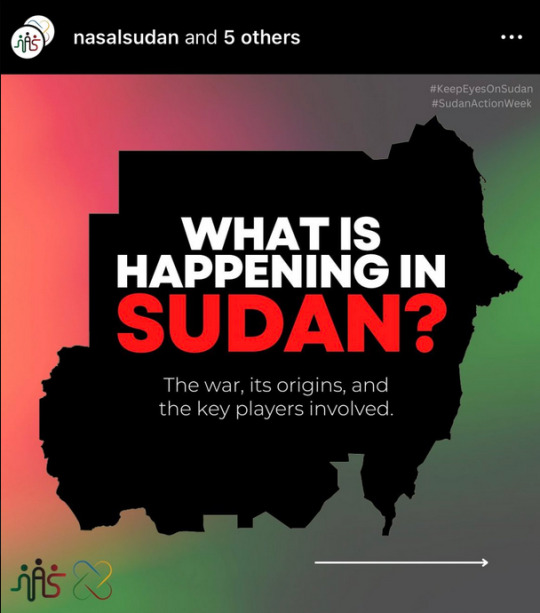
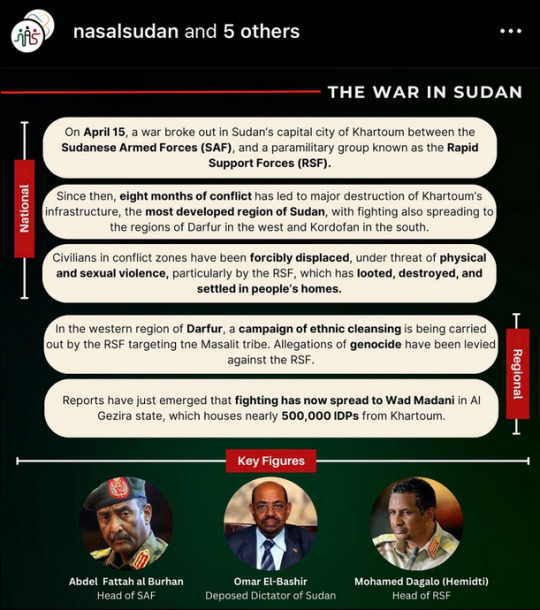
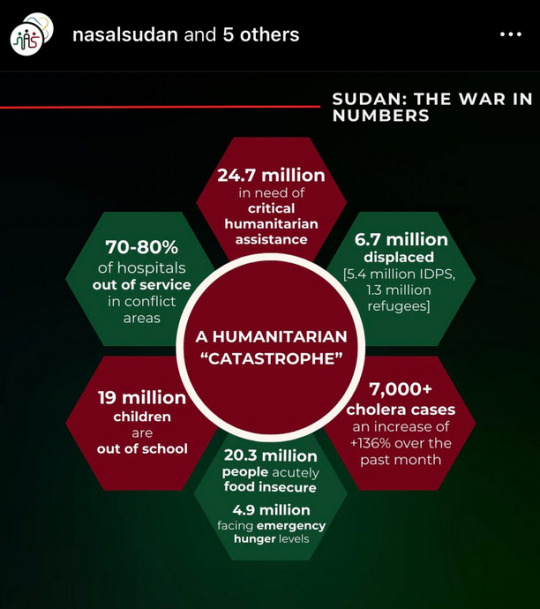

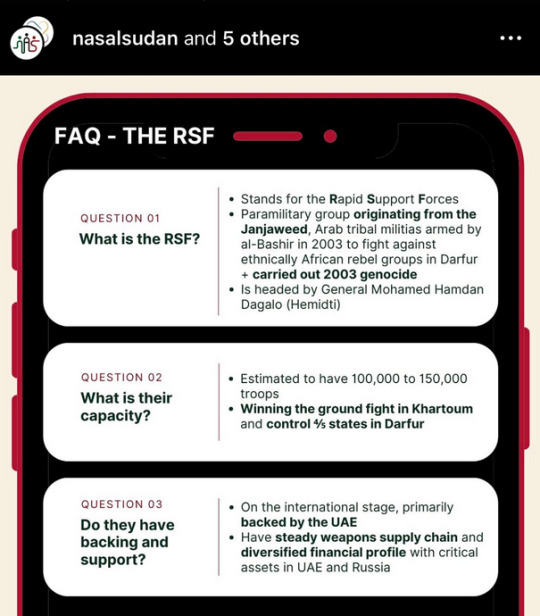
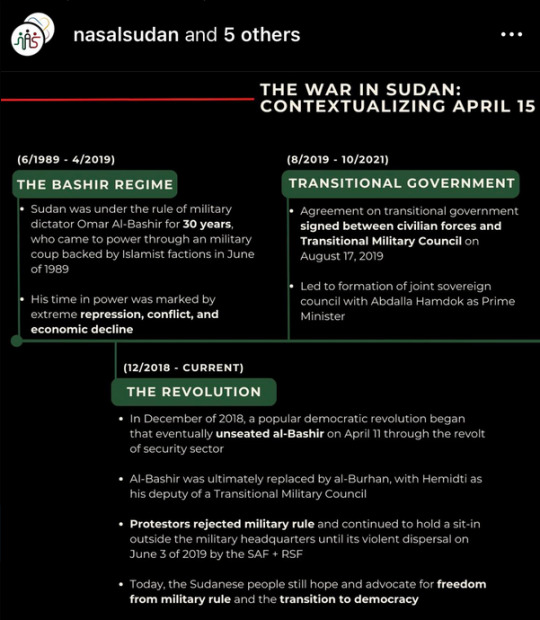
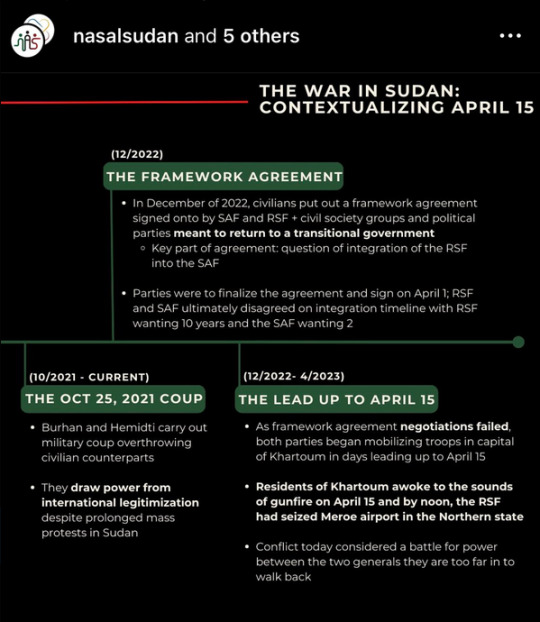
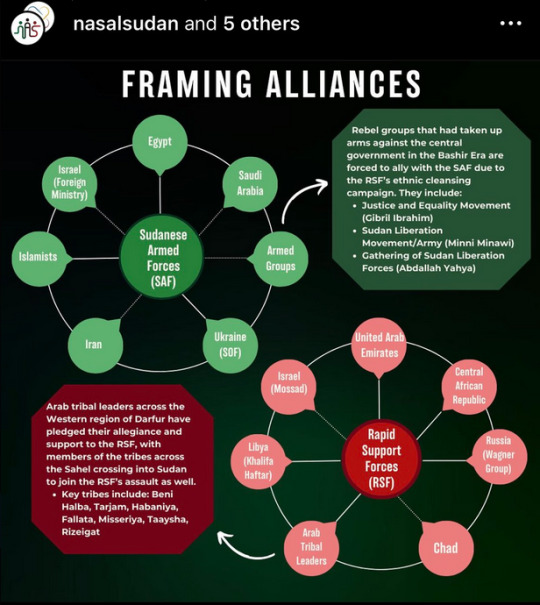
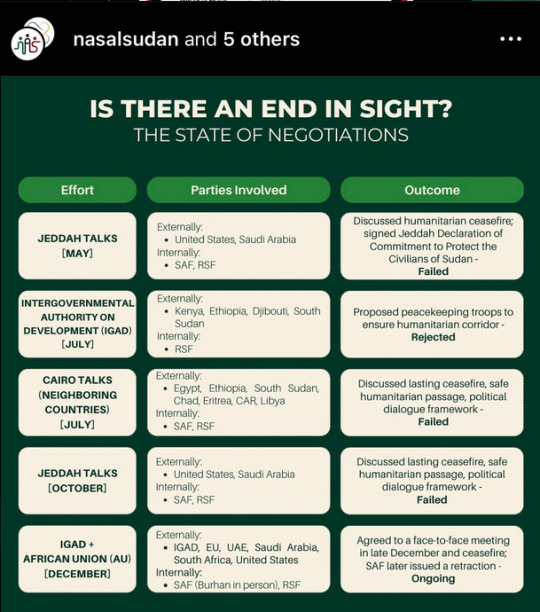

Transcript:
What is happening in Sudan?
The war, its origins, and the key players involved.
The war in Sudan
On April 15, a war broke out in Sudan's capital city of Khartoum between the Sudanese Armed Forces (SAF), and a paramilitary group known as the Rapid Support Forces (RSF).
Since then, eight months of conflict has led to major destruction of Khartoum's infrastructure, the most developed region of Sudan, with fighting also spreading to the regions of Darfur in the west and Kordofan in the south.
Civilians in conflict zones have been forcibly displaced, under threat of physical and sexual violence, particulary by the RSF, which has looted, destroyed, and settled in people's homes.
In the western region of Darfur, a campaign of ethnic cleansing is being carried out by the RSF targeting the Masalit tribe. Allegations of genocide have been levied against the RSF.
Reports have just emerged that fighting has now spread to Wad Madani in AI Gazira state, which houses nearly 500,00 IDPs from Khartoum.
Key Figures: Abdel Fattah al Burhan (head of SAF), Omar El-Bashir (deposed dictator of Sudan), Mohamed Dagalo (Hemidti) (head of RSF)
Sudan: the war in numbers
24.7 million in need of critical humanitarian assistance
6.7 million displaced [5.4 million IDPS, 1.3 million refugees]
7,000+ cholera cases an increase of +136% over the past month
20.3 million people acutely food insecure- 4.9 million facing emergency hunger levels
19 million children are out of school
70-80% of hospitals out of service in conflict areas
FAQ - THE SAF
What is the SAF?
stands fro the Sudanese Armed Forces
is the de-facto government of Sudan
is headed by Lt. General Abdel Fattah al-Burhan
What is their capacity?
estimated to have aprox. 200,000 personnel and tactical advantage of airforce
currently control of relative northern and eastern regions of Sudan with functioning capital in Port Sudan (East)
Do they have backing and support?
on the international stage, primarily backed by Egypt
limited weapons supply from allies
internally, the SAF is ultimately considered the lesser of two evils
FAQ - THE RSF
What is the RSF?
stands fro Rapid Support Forces
paramilitary group originating from the Janjaweed, Arab tribal militias armed by al-Bashir in 2003 to fight against ethnically African rebel groups in Darfur + carried out 2003 genocide
is headed by General Mohamed Hamdan Dagalo (Hemidti)
What is their capacity?
estimated to have 100,000 to 150,000 troops
winning the ground fight in Khartoum and control 4/5 states in Darfur
Do they have backing and support?
on the international stage, primarily backed by the UAE
have steady weapons supply chain and diversified financial profile with critical assets in UAE and Russia
The war in Sudan: contextualizing April 15
6/1989 - 4/2019 - The Bashir Regime
Sudan was under the rule of military dictator Omar Al-Bashir for 30 years, who came to power through an military coup backed by Islamist factions in June of 1989
His time in power was marked by extreme repression, conflict, and economic decline
12/2018 - current - The revolution
In December of 2018, a popular democratic revolution began taht eventually unseated al-Bashir on April 11 through the revolt of security sector
Al-Bashir was ultimately replaced by al-Burhan, with Hemidti as his deputy of a Transitional Military Council
Protestors rejected military rule and continued to hold a sit-in outside the military headquarters until its violent dispersal on June 3 of 2019 by the SAF + RSF
Today, the Sudanese people still hope and advocate for freedom from the military rule and the transition to democracy
8/2019 - 10/2021 - Transitional Government
Agreement on transitional government signed between civilian forces and Transitional Military Council on August 17, 2019
Led to formation to joint sovereign council with Abdalla Hamdok as Prime Minister
10/2021 - Current - The Oct 25, 2021 Coup
Burhan and Hemidti carry out military coup overthrowing civilian counterparts
They draw power from international legitimization despite prolonged mass protests in Sudan
12/2022- The Framework Agreement
In December of 2022, civilians put out a framework agreement signed onto by SAF and RSF + civil society groups and political parties meant to return to a transitional government - key part of agreement: question of integration of the RSF into the SAF
Parties were to finalize the agreement and sign on April 1; RSF and SAF ultimately disagreed on the integration timeline with RSF wanting 10 years and the SAF wanting 2
12/2022-4/2023 - The Lead up to April 15
As framework agreement negotiations failed, both parties began mobilizing troops in capital of Khartoum in days leading up to April 15
Residents of Khartoum awoke to the sounds of gunfire on April 15 and by noon, the RSF had seized Meroe airport in the Northern state
Conflict today considered a battle of power between the two generals they are too far in to walk back
Framing alliances
Sudnese Armed Forces (SAF):
Saudi Arabia
armed groups- rebel groups that had taken up arms against the central government in the Bashir Era are forced to ally with the SAF due to the RSF's ethnic cleansing campaign. They include: Justice and Equality Movement (Gibril Ibrahim), Sudan Liberation Movement/Army (Minni Minawi), Gathering of Sudan Liberation Forces (Abdallah Yahya)
Ukraine (SOF)
Iran
Islamists
Israel (Foreign Ministry)
Egypt
Rapid Support Forces (RSF):
United Arab Emirates
Central African Republic
Russia (Wagner Group)
Chad
Arab Tribal Leaders- Arab tribal leaders across the Western region of Darfur have pledged their allegiance and support to the RSF, with members of the tribes across the Sahel crossing into Sudan to join the RSF's assault as well. Key tribes include: Beni Halba, Tarjam, Habaniya, Fallata, Misseriya, Taaysha, Rizeigat
Libya (Khalifa Haftar)
Israel (Mossad)
Is there an end in sight?
The state of negotiations
Effort- Jeddah Talks [May]
Parties Involved- Externally: United States, Saudi Arabia. Internally: SAF, RSF
Outcome: discussed humanitarian ceasefire; signed Jeddah Declaration of Commitment to Protect the Civilians of Sudan- FAILED
Effort- Intergovernmental authority on development (IGAD) [July]
Parties Involved- Externally: Kenya, Ethiopia, Djibouti, South Sudan . Internally: RSF
Outcome: proposed peacekeeping troops to ensure humanitarian corridor-REJECTED
Effort- Cairo talks (neighboring countries) [July]
Parties Involved- Externally: Egypt, Ethiopia, South Sudan, Chad, Eritrea, CAR, Libya. Internally: SAF, RSF
Outcome: discussed lasting ceasefire, safe humanitarian passage, political dialogue framework-FAILED
Effort- Jeddah talks [October]
Parties Involved- Externally: United States, Saudi Arabia . Internally: SAF, RSF
Outcome: discussed lasting ceasefire, safe humanitarian passage, political dialogue framework-FAILED
Effort- IGAD + African Union (AU) [December]
Parties Involved- Externally: IGAD, EU, UAE, Saudi Arabia, South Africa, United States. Internally: SAF (Burhan in person), RSF
Outcome: agreed to face-to-face meeting in late December and ceasefire; SAF later issued a retraction-ONGOING
What can you do?
The conflict in Sudan calls for the collective support of all to raise awareness about war and aid the Sudanese people on the ground, especially when we live in nations that have been complicit in the oppression of the Sudanese people. Explore the potions below and share with others.
Educate yourself- deepen your knowledge about Sudan, empowering yourself with insights into the complexities of the situation.
Donate- extend a helping hand to Sudan by generously donation to individuals or grassroots organizations on the ground.
Contact your reps- amplify your impact by contacting your representatives, avocating for positive change
221 notes
·
View notes